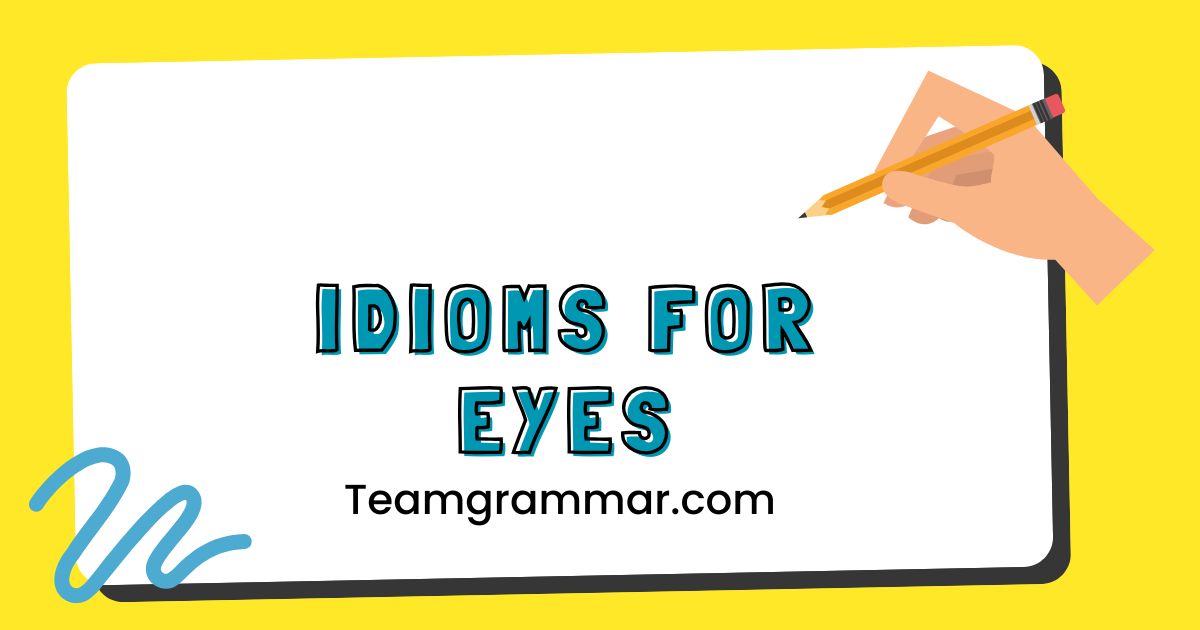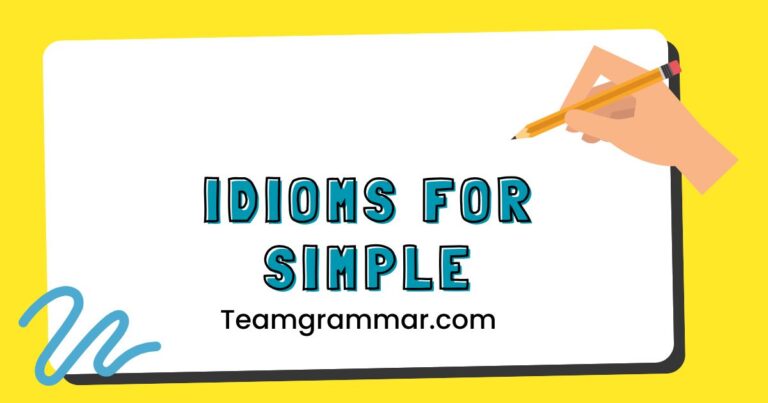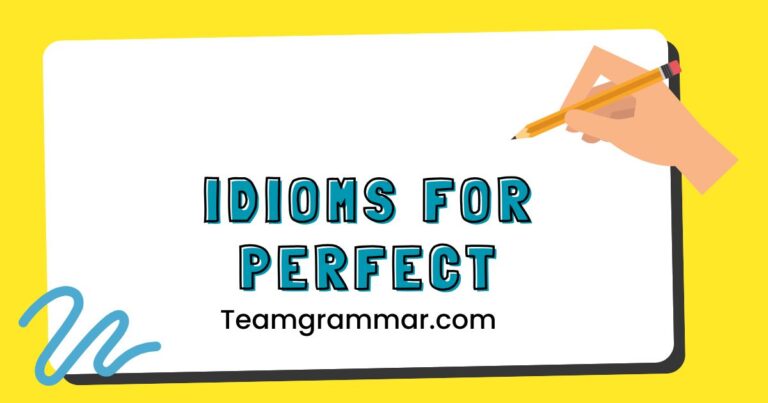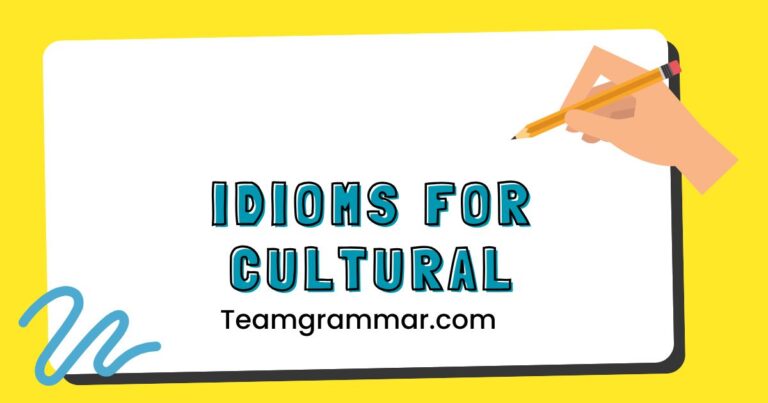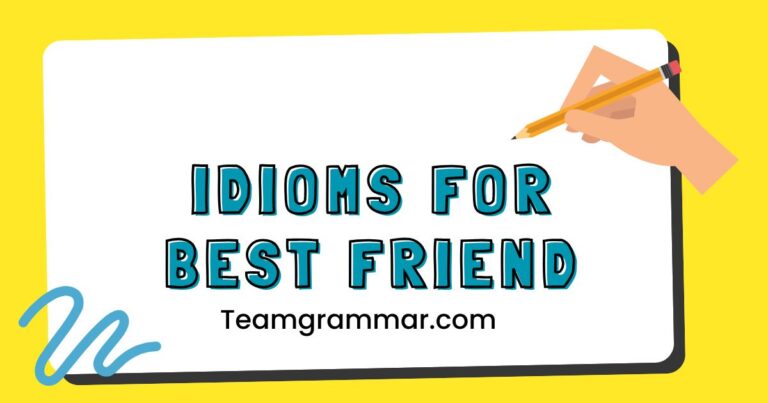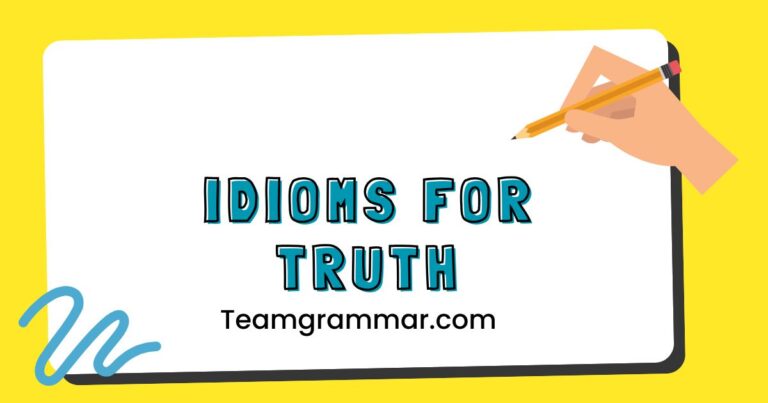31 Idioms for Eyes: Mastering Figurative Language
Idioms add color and depth to the English language, allowing speakers to convey complex meanings in a concise and engaging way. Understanding idioms related to ‘eyes’ is crucial for comprehending nuanced expressions and improving overall communication skills.
This article delves into the fascinating world of eye-related idioms, providing definitions, examples, and practical exercises to help learners master these figurative expressions. Whether you’re an ESL student, a language enthusiast, or simply looking to enrich your vocabulary, this guide offers valuable insights into the art of using idioms effectively.
By exploring the various types of eye idioms, their structural components, and their appropriate usage, you’ll gain a deeper appreciation for the richness and complexity of the English language. This knowledge will not only enhance your comprehension of written and spoken English but also empower you to express yourself with greater precision and flair.
Table of Contents
- Definition of Eye Idioms
- Structural Breakdown of Eye Idioms
- Types and Categories of Eye Idioms
- Examples of Eye Idioms
- Usage Rules for Eye Idioms
- Common Mistakes with Eye Idioms
- Practice Exercises
- Advanced Topics: Nuances and Variations
- FAQ: Frequently Asked Questions
- Conclusion
Definition of Eye Idioms
An idiom is a phrase or expression whose meaning cannot be understood from the ordinary meanings of the individual words within it. Instead, idioms have a figurative meaning that is culturally specific.
Eye idioms are a subset of these phrases that involve the word “eye” or refer to eyes in a metaphorical sense.
These idioms are used to describe a wide range of concepts, including physical appearance, levels of attention, emotional states, acts of deception, and processes of judgment. Understanding eye idioms is essential for mastering English because they are frequently used in both spoken and written communication.
The function of these idioms is to add color, depth, and nuance to language, making it more expressive and engaging.
Eye idioms can be classified based on their function and the context in which they are used. For instance, some idioms describe the physical appearance of the eyes (“bright-eyed and bushy-tailed”), while others relate to the act of observing or paying attention (“keep an eye on”).
Still others express emotions or feelings (“eyes filled with tears”). The context in which an idiom is used often provides clues to its meaning, but familiarity with common idioms is crucial for accurate interpretation.
Structural Breakdown of Eye Idioms
Eye idioms, like all idioms, are fixed expressions with a specific structure. They typically consist of a combination of words that, when used together, create a meaning distinct from the literal definitions of the individual words.
The structural elements of eye idioms often include nouns, verbs, adjectives, and prepositions, arranged in a specific order to convey the intended figurative meaning.
The patterns in eye idioms can vary, but some common structures include:
- Verb + Eye + Preposition: Examples include “see eye to eye” and “turn a blind eye to.”
- Adjective + Eye + Noun: Examples include “eagle eye” and “wandering eye.”
- Eye + Verb + Adverb: An example is “eyes widen in surprise.”
- Phrases with “Eye”: Examples include “in the blink of an eye” and “an eye for detail.”
The rules governing the structure of eye idioms are generally fixed; changing the word order or substituting words can alter the meaning or render the idiom nonsensical. For example, “see eye to eye” has a specific meaning of agreeing with someone, and changing it to “eye to see eye” would not convey the same meaning.
It’s important to learn the correct structure of each idiom to use it effectively.
Understanding the structural elements of eye idioms can help learners recognize and interpret them more easily. By paying attention to the patterns and combinations of words, learners can develop a better sense of how these idioms function within the English language.
This knowledge will also facilitate the process of learning new idioms and incorporating them into their own vocabulary.
Types and Categories of Eye Idioms
Eye idioms can be categorized based on the aspect of eyes or vision they relate to. Here are some common categories:
Idioms Describing Appearance
These idioms describe the physical appearance or condition of the eyes. They often convey information about a person’s health, age, or emotional state.
For instance, “bright-eyed and bushy-tailed” suggests someone is energetic and alert, while “bags under the eyes” indicates tiredness or lack of sleep.
Idioms Related to Attention
These idioms pertain to the act of observing, watching, or paying attention. They often involve the use of eyes to monitor or scrutinize something.
“Keep an eye on” means to watch carefully, while “have eyes everywhere” suggests being able to observe everything that is happening.
Idioms Expressing Emotion
These idioms use eyes as a metaphor for expressing emotions or feelings. They can convey a wide range of emotions, such as happiness, sadness, anger, or surprise.
“Eyes filled with tears” indicates sadness or grief, while “eyes sparkling with joy” suggests happiness or excitement.
Idioms Involving Deception
These idioms relate to the act of deceiving or misleading someone, often involving the use of eyes to conceal or misrepresent the truth. “Pull the wool over someone’s eyes” means to deceive or trick someone, while “turn a blind eye to” means to ignore something that one knows is wrong.
Idioms Referencing Judgment
These idioms involve making judgments or assessments based on visual observations. They often refer to the ability to discern or evaluate something.
“Have an eye for detail” means to be good at noticing small but important things, while “see eye to eye” means to agree with someone.
Examples of Eye Idioms
To further illustrate the different types of eye idioms, here are detailed examples organized by category:
Appearance Idioms: Detailed Examples
These idioms focus on describing how someone’s eyes look, often reflecting their overall state or character. They are a vivid way to add detail to descriptions.
Below is a comprehensive table with examples:
| Idiom | Meaning | Example Sentence |
|---|---|---|
| Bright-eyed and bushy-tailed | Energetic and alert | She arrived at the office bright-eyed and bushy-tailed, ready to start the day. |
| Bags under the eyes | Indicating tiredness or lack of sleep | He had dark bags under his eyes after working all night on the project. |
| Beady eyes | Small, sharp, and often suspicious-looking eyes | The villain in the movie had beady eyes that made him look untrustworthy. |
| Bedroom eyes | A suggestive, sultry look | She gave him bedroom eyes across the crowded room. |
| Black eye | A bruise around the eye, usually from a punch | He got a black eye in the boxing match. |
| Bloodshot eyes | Eyes that are red due to lack of sleep or irritation | His eyes were bloodshot from staring at the computer screen all day. |
| Doe-eyed | Having large, innocent-looking eyes | She had a doe-eyed expression that made her look very vulnerable. |
| Fishy eyes | Expressionless or cold eyes | He stared at me with fishy eyes, revealing nothing. |
| Heavy-lidded eyes | Eyes that appear tired or drowsy | She had heavy-lidded eyes that suggested she hadn’t slept well. |
| Piercing eyes | Eyes that seem to look directly into someone’s soul | The detective had piercing eyes that made the suspect nervous. |
| Shifty eyes | Eyes that dart around nervously, suggesting dishonesty | He had shifty eyes and wouldn’t make direct eye contact. |
| Sleepy eyes | Eyes that look tired and ready to close | The toddler rubbed his sleepy eyes and yawned. |
| Soft eyes | Kind and gentle eyes | She looked at the child with soft eyes full of compassion. |
| Starry-eyed | Naive and idealistic | The starry-eyed graduate dreamed of changing the world. |
| Wide-eyed | Surprised or innocent | The child looked at the magician with wide-eyed wonder. |
| With eyes downcast | Looking downwards, often out of shyness or sadness | She stood with eyes downcast, ashamed of her mistake. |
| Eagle-eyed | Having sharp vision and attention to detail | The eagle-eyed editor caught several errors in the manuscript. |
| Eyes like saucers | Very wide eyes, often due to surprise or shock | Her eyes were like saucers when she saw the surprise party. |
| Eyes popping out | Eyes widening in surprise or shock | His eyes were popping out when he heard the news. |
| Eyes glued to | Watching something with intense focus | His eyes were glued to the television during the football game. |
| Eyes shining | Eyes that look bright and happy | Her eyes were shining with happiness when she saw her family. |
| Kind eyes | Eyes that express warmth and kindness | The old man had kind eyes that made everyone feel comfortable. |
| Cold eyes | Eyes that express unemotional or unfriendly | The boss had cold eyes that made everyone in the office nervous. |
Attention Idioms: Detailed Examples
These idioms describe the act of paying attention or focusing one’s gaze on something. They are useful for describing levels of attentiveness and vigilance.
Here is a detailed table with examples:
| Idiom | Meaning | Example Sentence |
|---|---|---|
| Keep an eye on | Watch carefully | Please keep an eye on my luggage while I go to the restroom. |
| Have eyes everywhere | Being able to observe everything that is happening | The security system has eyes everywhere in the building. |
| Keep a close watch | Observe attentively | The doctor will keep a close watch on your condition. |
| Have an eye on | To be interested in or watching someone or something | I have an eye on that new sports car. |
| Cast an eye over | Give something a quick look | Could you cast an eye over my report before I submit it? |
| Turn a blind eye | Ignore something one knows is wrong | The manager turned a blind eye to the employee’s misconduct. |
| With eyes peeled | Watching carefully and alertly | We drove through the forest with eyes peeled for any signs of wildlife. |
| Keep your eyes open | Be alert and watchful | Keep your eyes open for any job opportunities. |
| Keep one’s eye on the ball | Stay focused on the task at hand | It’s important to keep your eye on the ball if you want to succeed. |
| Take one’s eye off the ball | Lose focus | He took his eye off the ball for a moment and missed the catch. |
| Have eyes only for someone | To be attracted or devoted to only one person | He has eyes only for her and doesn’t notice anyone else. |
| Be all eyes | Watching intently | The children were all eyes as the magician performed his tricks. |
| Make eye contact | Look someone in the eye | It’s important to make eye contact when you’re speaking to someone. |
| Catch someone’s eye | Attract someone’s attention | The colorful display caught my eye as I walked past the store. |
| See something out of the corner of your eye | Notice something peripherally | I saw a flash of movement out of the corner of my eye. |
| More than meets the eye | Something is more complex than it appears | This seemingly simple problem has more than meets the eye. |
| Eye-opening | Revealing or surprising | The documentary was an eye-opening experience. |
| An eye for detail | Good at noticing small but important things | She has an eye for detail, which makes her an excellent proofreader. |
| Feast your eyes on something | Look at something with great pleasure | Feast your eyes on this beautiful painting! |
| Keep a weather eye | To be cautious and watchful | We need to keep a weather eye on the economy. |
| With half an eye | With little effort or attention | I could tell with half an eye that he was lying. |
| Not believe your eyes | To be very surprised by what you are seeing | I couldn’t believe my eyes when I saw him again. |
Emotion Idioms: Detailed Examples
These idioms use eyes to express a range of emotions, adding depth and color to descriptions of feelings. They are essential for conveying emotional states in a vivid way.
Below is a comprehensive table with examples:
| Idiom | Meaning | Example Sentence |
|---|---|---|
| Eyes filled with tears | Sadness or grief | Her eyes filled with tears as she listened to the mournful music. |
| Eyes sparkling with joy | Happiness or excitement | Her eyes were sparkling with joy when she opened the present. |
| Eyes widening in surprise | Astonishment or shock | His eyes widened in surprise when he heard the unexpected news. |
| Eyes blazing with anger | Intense anger or rage | His eyes were blazing with anger as he confronted the person who had wronged him. |
| With a twinkle in one’s eye | Amusement or mischief | He told the story with a twinkle in his eye, suggesting he wasn’t being entirely serious. |
| Eyes clouding with sadness | Growing sadness or melancholy | Her eyes clouded with sadness as she remembered the past. |
| Eyes downcast | Shame, embarrassment, or sadness | She kept her eyes downcast, unable to face the crowd after her mistake. |
| Dry-eyed | Without tears, often implying stoicism | She remained dry-eyed throughout the funeral, showing remarkable strength. |
| Have stars in one’s eyes | To be ambitious or hopeful about becoming famous | The young actress had stars in her eyes as she auditioned for the role. |
| Cry your eyes out | To cry intensely for a long time | She cried her eyes out after watching the sad movie. |
| Look daggers at someone | To give someone an angry look | She looked daggers at him when he interrupted her. |
| Eyes popping out | Extreme surprise or shock | His eyes were popping out when he saw the huge birthday cake. |
| Eyes shining | Happiness and excitement are showing | Her eyes were shining when she talked about her new job. |
| A gleam in someone’s eye | A sign of intelligence, excitement, or amusement | There was a gleam in his eye as he explained his plan. |
| With tears in your eyes | Feeling emotional or moved | He spoke with tears in his eyes about his late wife. |
| Can’t take your eyes off someone | To be very attracted to someone | He can’t take his eyes off her; he’s completely smitten. |
| Eyes glued to | Fascinated and unable to look away | Their eyes were glued to the screen during the tense scene. |
| Giving someone the evil eye | To give someone a hateful look | She was giving him the evil eye after he made the offensive comment. |
| With a glint in one’s eye | Sign of excitement or mischief | He had a glint in his eye when he suggested going out for ice cream. |
| Unable to look someone in the eye | Feeling guilty or ashamed | He was unable to look his father in the eye after lying. |
Deception Idioms: Detailed Examples
These idioms describe situations involving deception or misrepresentation, often using the eyes as a metaphor for concealing or revealing the truth. They are vital for understanding how language can be used to describe dishonesty.
Below is a comprehensive table with examples:
| Idiom | Meaning | Example Sentence |
|---|---|---|
| Pull the wool over someone’s eyes | Deceive or trick someone | He tried to pull the wool over my eyes, but I saw through his lies. |
| Turn a blind eye to | Ignore something one knows is wrong | The authorities turned a blind eye to the illegal activities. |
| See through someone | Understand someone’s true intentions | I can see through her fake smile; she’s not really happy. |
| More than meets the eye | Something is more complex or deceptive than it appears | This seemingly simple problem has more than meets the eye. |
| Have something up one’s sleeve | Have a secret plan or advantage | He had something up his sleeve that would surprise everyone. |
| Keep something hidden | Conceal something from view | They tried to keep their relationship hidden from their parents. |
| Not meet someone’s eye | Avoid looking at someone, often due to guilt or dishonesty | He wouldn’t meet my eye, which made me suspicious. |
| Eyes can deceive | Appearances can be misleading | Remember, eyes can deceive; don’t trust everything you see. |
| Throw dust in someone’s eyes | Deliberately mislead or confuse someone | The company tried to throw dust in the investors’ eyes with misleading financial reports. |
| Have shifty eyes | To have eyes that dart around nervously, suggesting dishonesty | He had shifty eyes and wouldn’t make direct eye contact, which made me suspicious. |
| Unable to look someone in the eye | Feeling guilty or ashamed and unable to face someone | After lying to his friend, he was unable to look him in the eye. |
| See past someone’s lies | Recognize the deception | She could see past his lies and knew he wasn’t telling the truth. |
| Pull the shade on something | To hide or conceal something from view | The politician tried to pull the shade on his past scandals. |
| Keep something under wraps | To keep something secret | They’re trying to keep the project under wraps until the official announcement. |
| Hide something in plain sight | To conceal something by making it appear obvious | He hid the key in plain sight, knowing no one would think to look there. |
| Act blind to something | To pretend not to notice something | She acted blind to his obvious attempts to flirt with her. |
| Not show your hand | To not reveal your intentions | He decided not to show his hand until the final moment of the negotiation. |
| Wear a mask | To hide your true feelings or intentions | She wore a mask of happiness, even though she was deeply saddened. |
| Hide behind a smile | To conceal sadness or pain with a smile | He hid behind a smile, even though he was heartbroken. |
| Lying through your teeth | To lie blatantly and shamelessly | He was lying through his teeth when he said he didn’t know anything about it. |
Judgment Idioms: Detailed Examples
These idioms involve making evaluations or assessments based on visual observations or insights. They are useful for describing the ability to discern or judge something accurately.
Below is a comprehensive table with examples:
| Idiom | Meaning | Example Sentence |
|---|---|---|
| See eye to eye | Agree with someone | They finally saw eye to eye on the best course of action. |
| Have an eye for detail | Good at noticing small but important things | She has an eye for detail, which makes her an excellent proofreader. |
| Have an eye for beauty | Appreciate aesthetics | The artist has an eye for beauty in everyday objects. |
| In the eyes of | According to someone’s opinion or perspective | In the eyes of the law, he is innocent until proven guilty. |
| An eye for an eye | Retaliation in kind | The old saying goes, “An eye for an eye,” but that’s not always the best approach. |
| See the big picture | Understand the overall context or perspective | It’s important to see the big picture when making strategic decisions. |
| See the light | Come to understand or realize something | After much debate, he finally saw the light and agreed with our plan. |
| Judge someone based on appearances | Make assumptions based on how someone looks | It’s wrong to judge someone based on appearances; get to know them first. |
| Look at something with a critical eye | Evaluate something carefully and critically | The professor looked at the student’s essay with a critical eye. |
| Have a good eye | Possess a talent or skill for judging something | He has a good eye for spotting undervalued properties. |
| Keep a close watch | To observe attentively and carefully | The security guard kept a close watch on the entrance to prevent any unauthorized access. |
| Take a long hard look at something | To examine something carefully and thoroughly | We need to take a long hard look at our finances to see where we can cut costs. |
| A bird’s eye view | A perspective from above, offering a broad overview | From a bird’s eye view, the city looked like a miniature landscape. |
| See things differently | To have a different perspective or opinion | They see things differently, which often leads to interesting debates. |
| Have an inside view | To have access to privileged or confidential information | As an employee, he had an inside view of the company’s operations. |
| Have a jaundiced eye | To view something with cynicism or prejudice | He has a jaundiced eye towards politicians after being betrayed in the past. |
| See the writing on the wall | To recognize an impending negative outcome | They saw the writing on the wall and started looking for new jobs. |
| View the world through rose-colored glasses | To see things in an unrealistically positive way | She tends to view the world through rose-colored glasses, ignoring the potential problems. |
| Assess someone up and down | To evaluate someone from head to toe | He assessed me up and down before deciding whether to hire me. |
| Size someone up | To quickly assess or evaluate someone | She sized him up as soon as he walked into the room. |
Usage Rules for Eye Idioms
Using eye idioms correctly requires understanding their specific meanings and contexts. Here are some general rules to follow:
- Understand the Meaning: Before using an eye idiom, ensure you fully understand its figurative meaning. Misusing an idiom can lead to confusion or miscommunication.
- Consider the Context: Eye idioms are often context-dependent. The meaning of an idiom can vary slightly depending on the situation in which it is used.
- Use Appropriately: Eye idioms are generally informal and should be used in appropriate settings. Avoid using them in formal writing or presentations unless they are integral to the message.
- Maintain Correct Structure: Eye idioms have a fixed structure, and changing the word order or substituting words can alter the meaning or render the idiom nonsensical.
- Be Aware of Cultural Differences: Idioms are culturally specific, and what is common in one culture may not be understood in another. Be mindful of your audience when using eye idioms.
Exceptions to these rules are rare, as idioms are generally fixed expressions. However, some idioms may have slight variations in usage depending on regional dialects or personal preferences.
It’s always best to err on the side of caution and use idioms in their most commonly accepted form.
Special cases may arise when using eye idioms in creative writing or figurative language. In such cases, writers may intentionally manipulate or twist idioms to create a unique effect.
However, this should be done with care and awareness of the potential for misinterpretation.
Common Mistakes with Eye Idioms
Learners often make mistakes when using eye idioms due to a lack of familiarity with their meanings or structures. Here are some common errors:
| Incorrect | Correct | Explanation |
|---|---|---|
| I keep my eyes to him. | I keep an eye on him. | The correct idiom is “keep an eye on,” not “keep eyes to.” |
| They see face to face. | They see eye to eye. | The correct idiom is “see eye to eye,” meaning “agree.” |
| He turned a deaf eye to the problem. | He turned a blind eye to the problem. | The correct idiom is “turn a blind eye,” meaning “ignore.” |
| She has a nose for detail. | She has an eye for detail. | The correct idiom is “an eye for detail,” not “a nose for detail.” |
| He caught my ear. | He caught my eye. | The correct idiom is “caught my eye,” meaning “attracted my attention.” |
To avoid these mistakes, it’s important to study eye idioms carefully and practice using them in context. Pay attention to the specific words and structures of each idiom, and be mindful of their figurative meanings.
Practice Exercises
Test your understanding of eye idioms with these practice exercises:
Exercise 1: Fill in the Blanks
Complete the sentences with the correct eye idiom from the list below.
Idiom List: keep an eye on, see eye to eye, turn a blind eye, an eye for detail, caught my eye
| Question | Answer |
|---|---|
| 1. Please ________ my bag while I go to get a coffee. | keep an eye on |
| 2. They don’t ________ on most issues. | see eye to eye |
| 3. The manager decided to ________ the employee’s lateness. | turn a blind eye to |
| 4. She has ________, which makes her a great editor. | an eye for detail |
| 5. The colorful advertisement ________ as I walked by. | caught my eye |
| 6. Can you ________ the kids for a few minutes? | keep an eye on |
| 7. The two leaders finally ________ after a long discussion. | see eye to eye |
| 8. He decided to ________ the illegal parking. | turn a blind eye to |
| 9. The photographer has ________, capturing the essence of each subject. | an eye for detail |
| 10. The beautiful dress in the window ________ immediately. | caught my eye |
Exercise 2: Matching Idioms to Meanings
Match the eye idiom to its correct meaning.
| Idiom | Meaning |
|---|---|
| 1. Bright-eyed and bushy-tailed | A. Ignore something one knows is wrong |
| 2. Turn a blind eye | B. Energetic and alert |
| 3. See through someone | C. Good at noticing small details |
| 4. An eye for detail | D. Understand someone’s true intentions |
| 5. Cry your eyes out | E. To cry intensely for a long time |
| 6. Look daggers at someone | F. To give someone an angry look |
| 7. Have stars in one’s eyes | G. To be ambitious or hopeful about becoming famous |
Answer Key: 1-B, 2-A, 3-D, 4-C, 5-E,
5-E, 6-F, 7-G
Exercise 3: Using Idioms in Sentences
Create a sentence using each of the following eye idioms.
- Keep your eye on the ball:
- See eye to eye:
- Turn a blind eye:
- Have an eye for detail:
- Pull the wool over someone’s eyes:
- Catch someone’s eye:
- Eyes filled with tears:
- More than meets the eye:
- With eyes peeled:
- See the light:
Advanced Topics: Nuances and Variations
Eye idioms, while generally fixed, can exhibit subtle nuances and variations depending on context and usage. Exploring these advanced topics can deepen your understanding and mastery of these expressions.
- Regional Variations: Some eye idioms may have regional variations in meaning or usage. For example, an idiom common in American English may not be as widely used or understood in British English.
- Historical Context: The origins and historical context of eye idioms can provide insights into their meanings and usage. Researching the etymology of these expressions can enhance your appreciation for their cultural significance.
- Figurative Language: Eye idioms are a type of figurative language, and understanding other forms of figurative language, such as metaphors, similes, and analogies, can improve your ability to interpret and use idioms effectively.
- Creative Writing: In creative writing, eye idioms can be manipulated or adapted to create unique effects. Writers may play with the literal and figurative meanings of idioms to add depth and complexity to their work.
- Cultural References: Some eye idioms may have cultural references or allusions that are not immediately obvious. Understanding these references can enhance your comprehension of the idiom’s meaning and significance.
By delving into these advanced topics, you can gain a more nuanced and sophisticated understanding of eye idioms, allowing you to use them with greater confidence and precision.
FAQ: Frequently Asked Questions
Conclusion
Mastering eye idioms is a valuable skill for anyone looking to improve their English language proficiency. By understanding the definitions, structures, and usage rules of these figurative expressions, you can enhance your comprehension of written and spoken English and express yourself with greater precision and flair.
This article has provided a comprehensive guide to eye idioms, covering a wide range of topics from basic definitions to advanced nuances. By reviewing the examples, completing the practice exercises, and exploring the additional resources, you can deepen your understanding of these expressions and incorporate them into your vocabulary.
Continue to practice and explore the world of eye idioms, and you’ll find that your communication skills will improve significantly. Happy learning!

